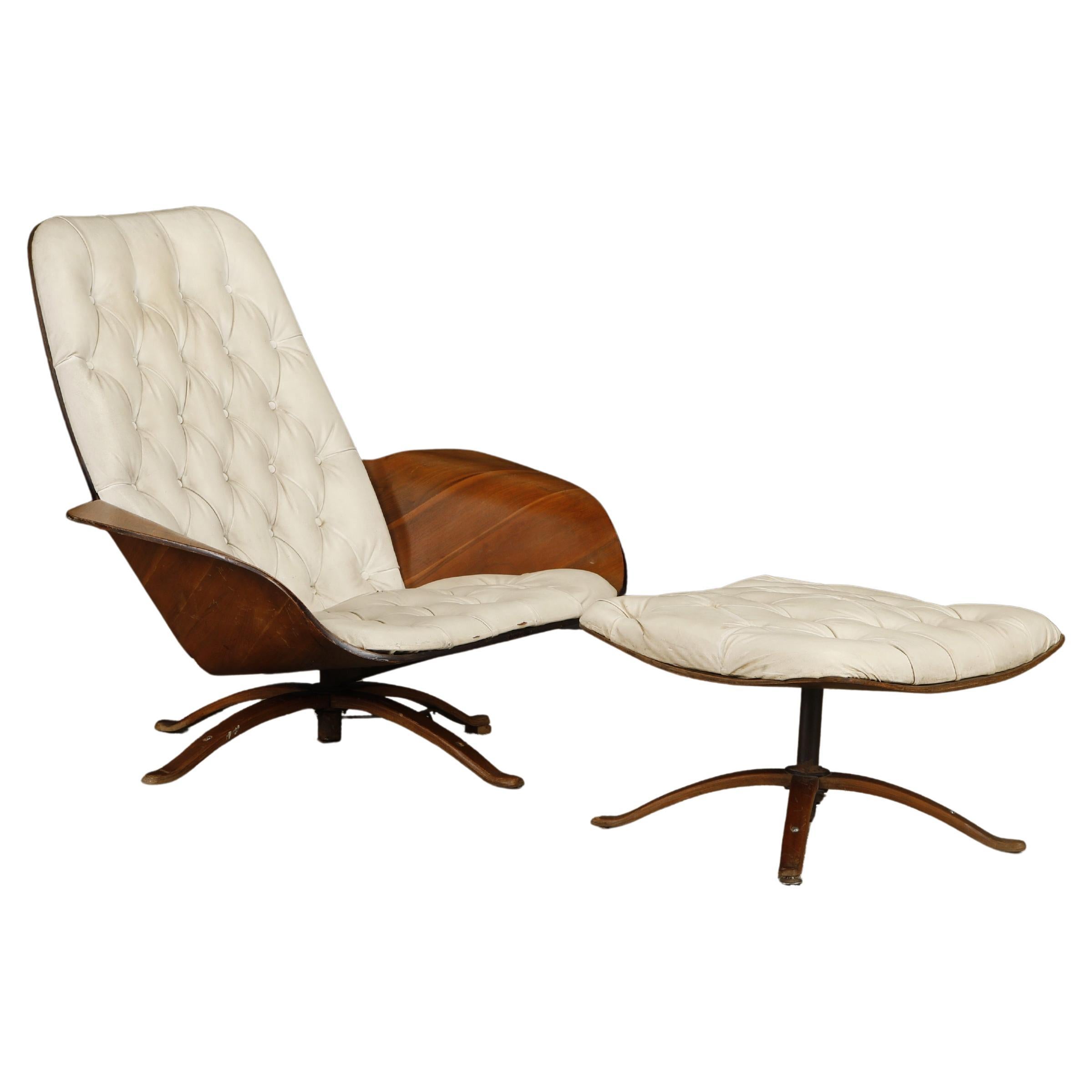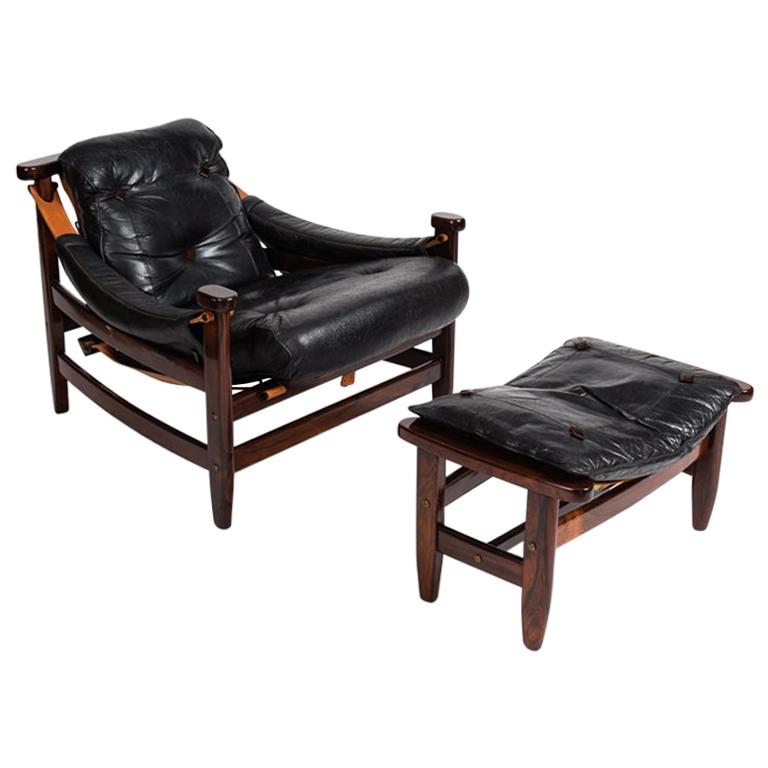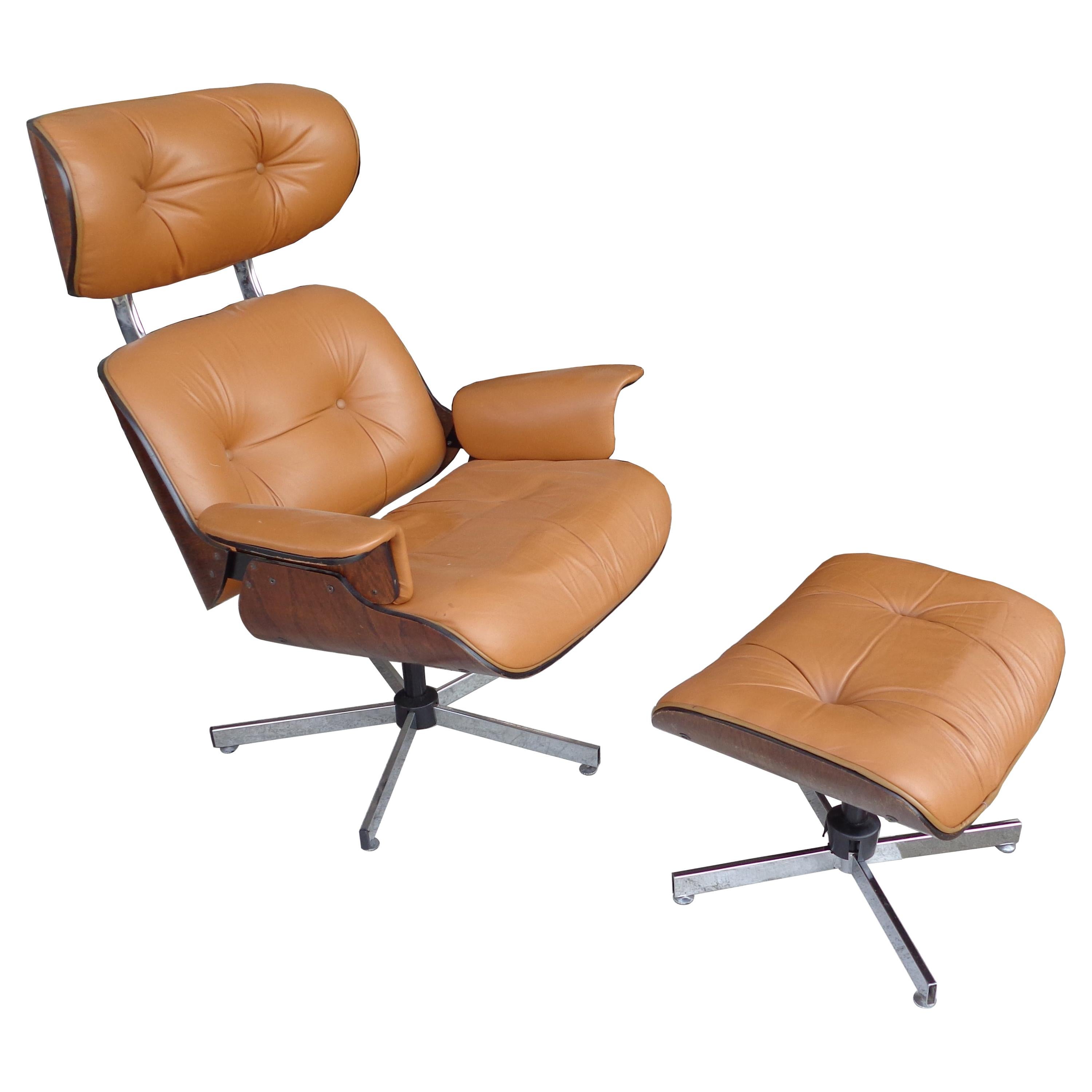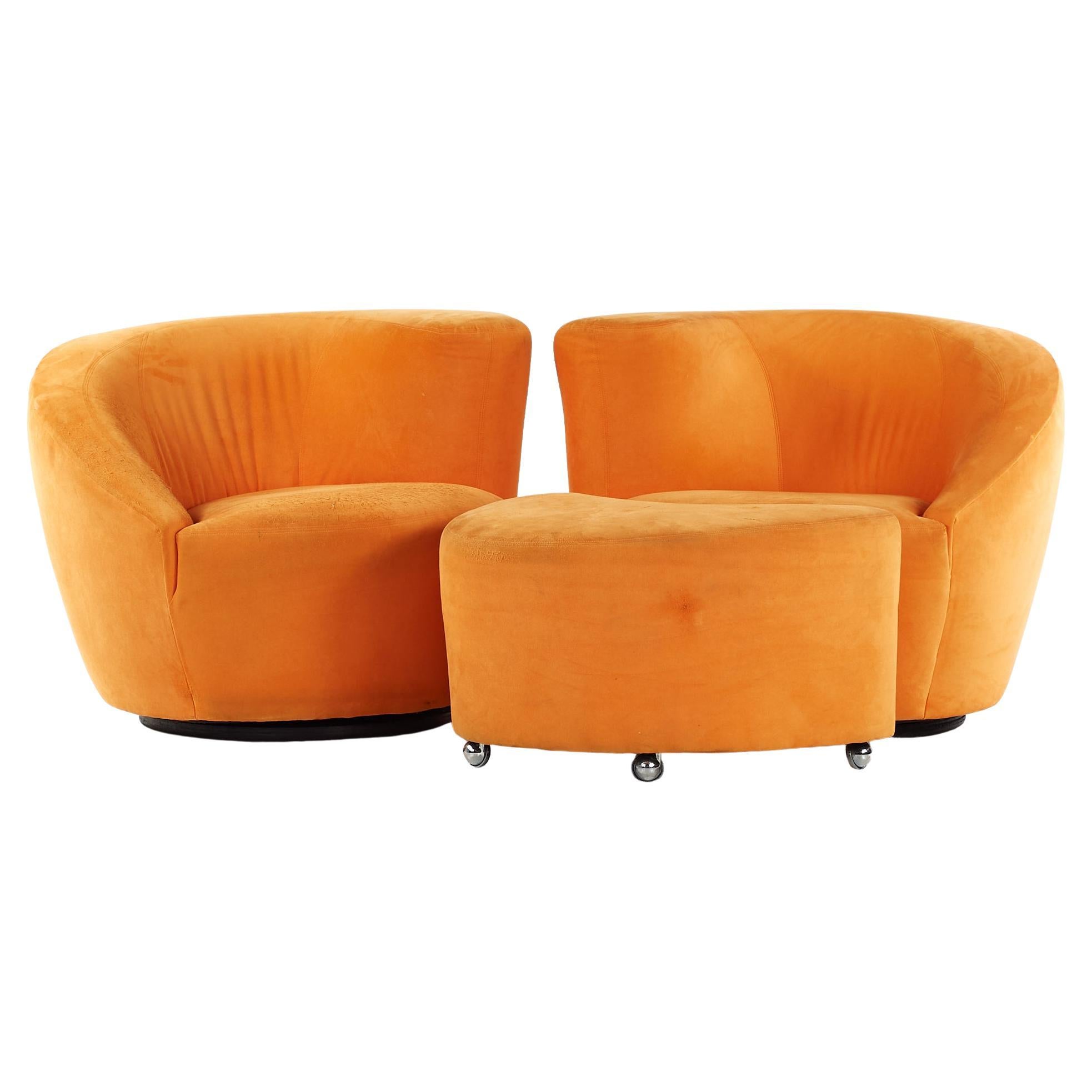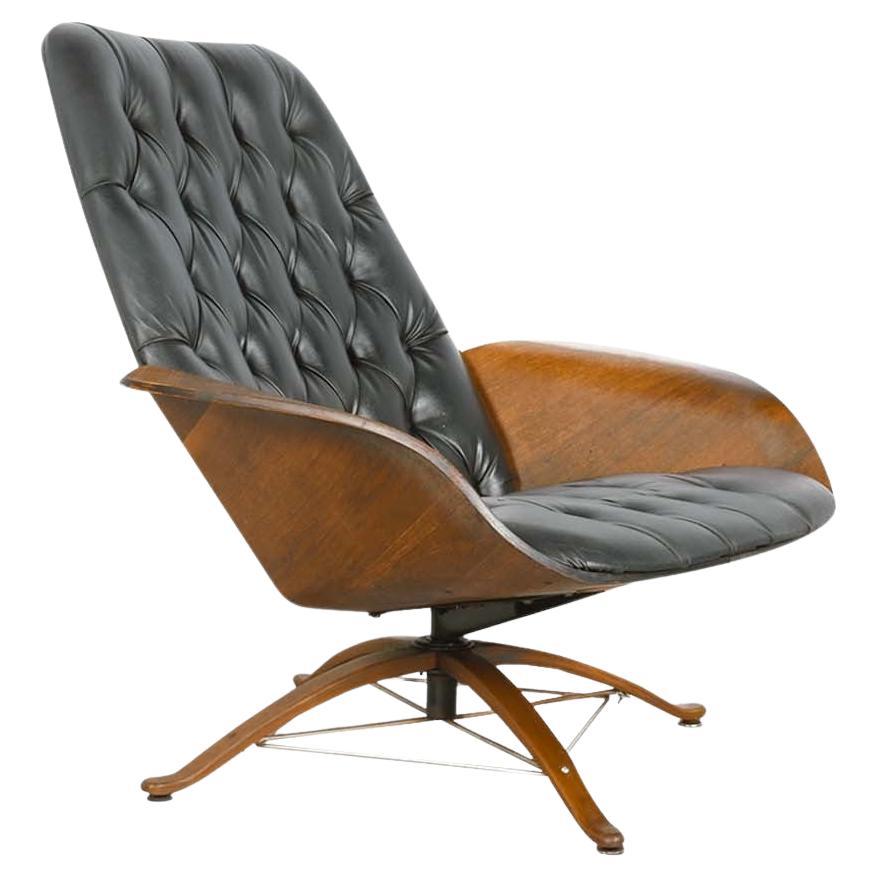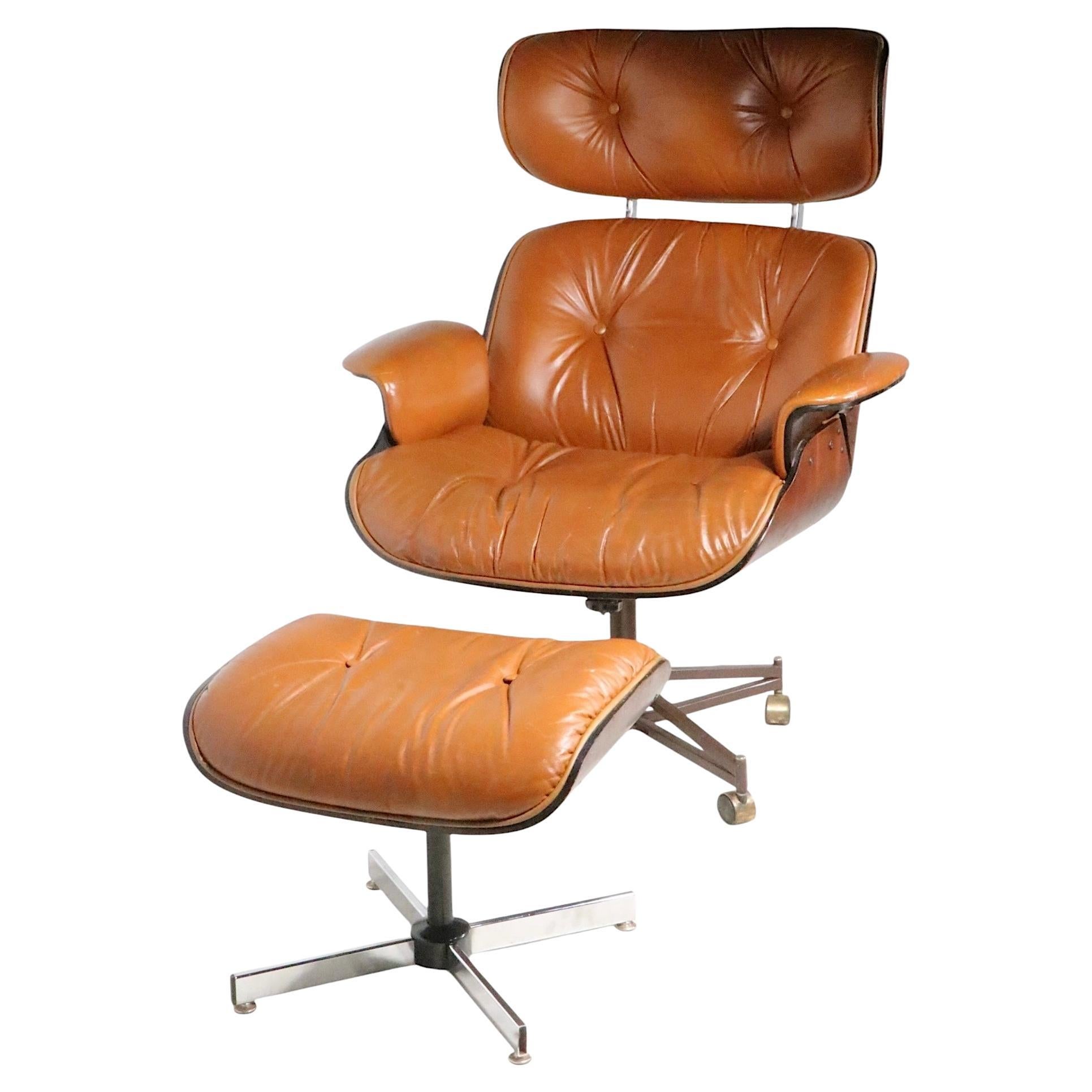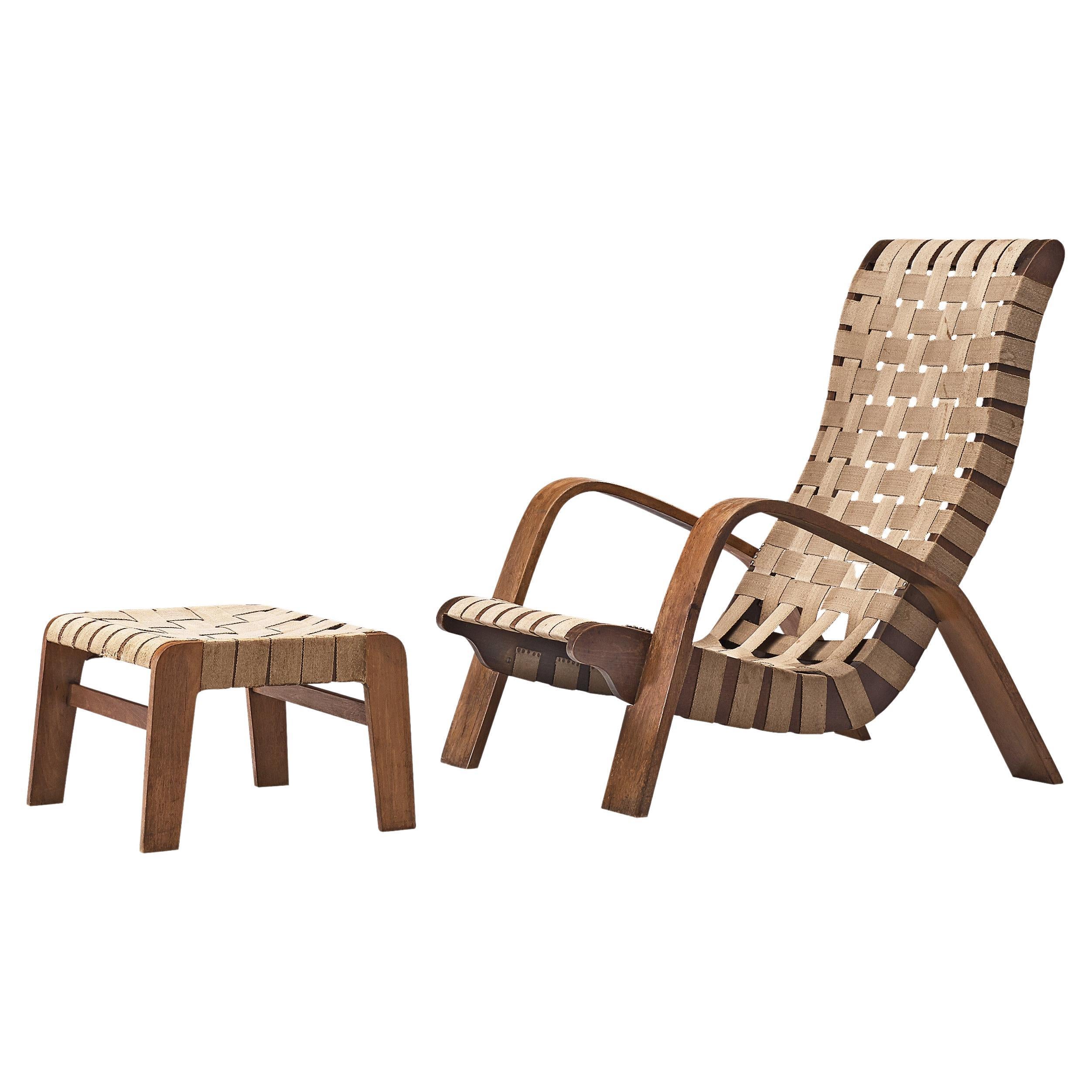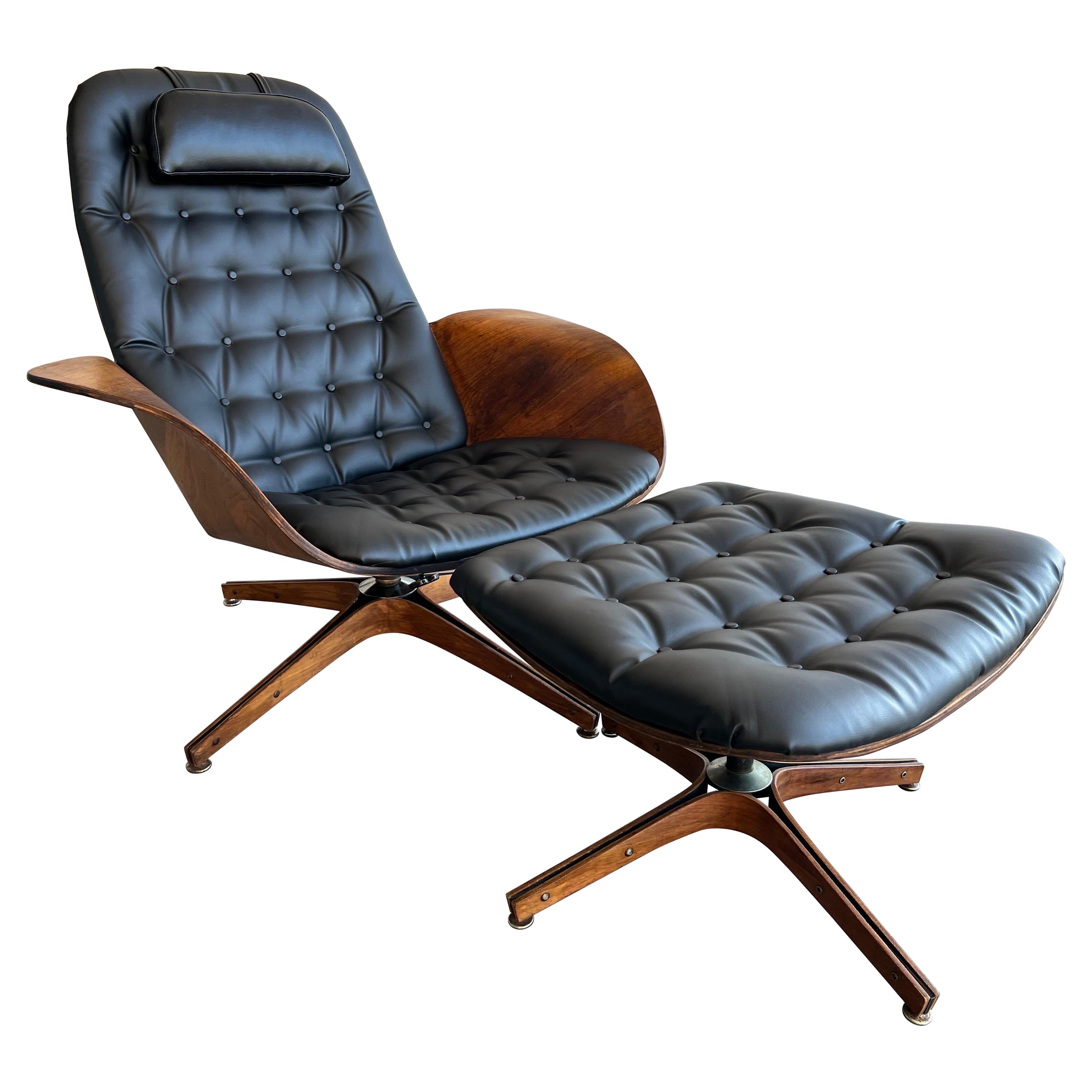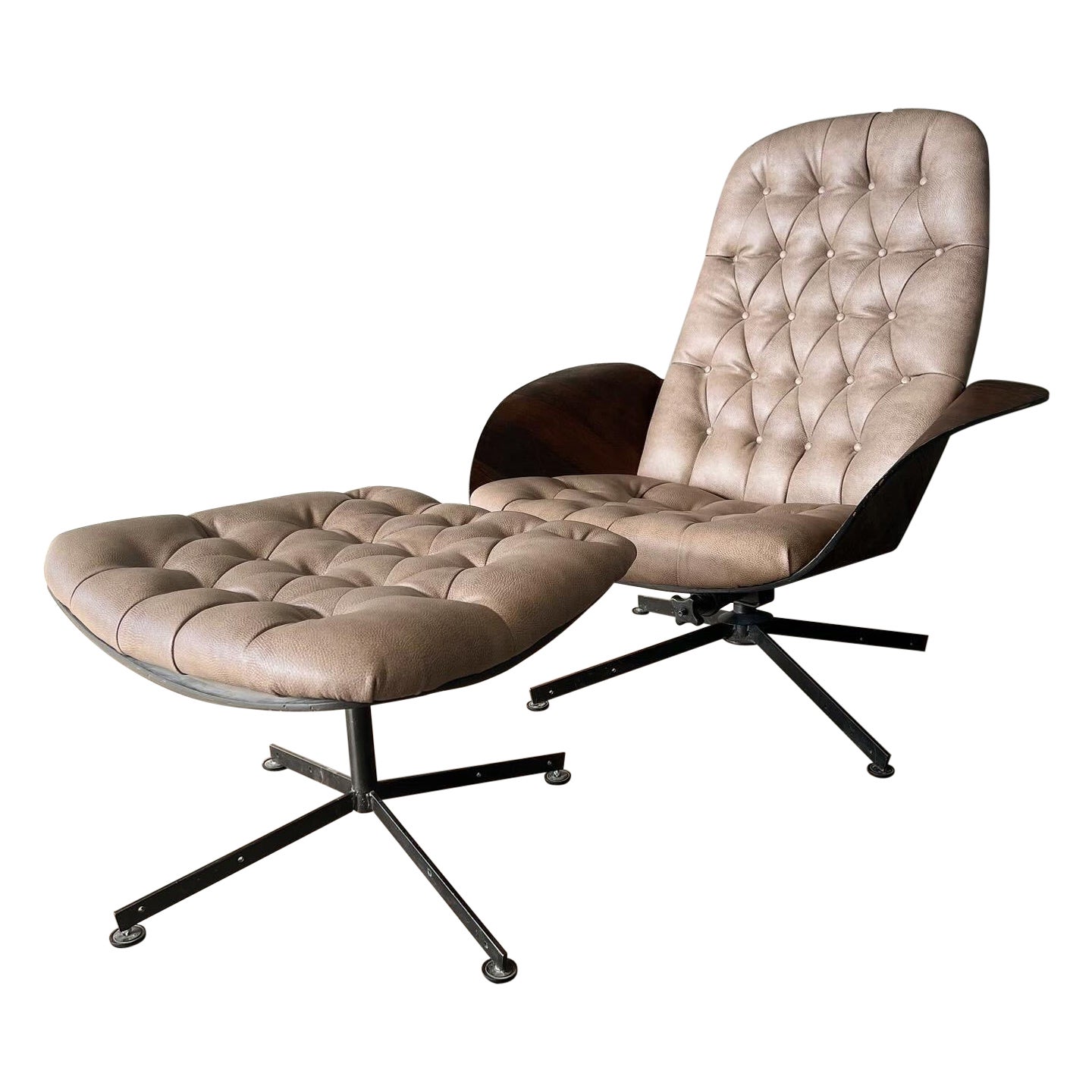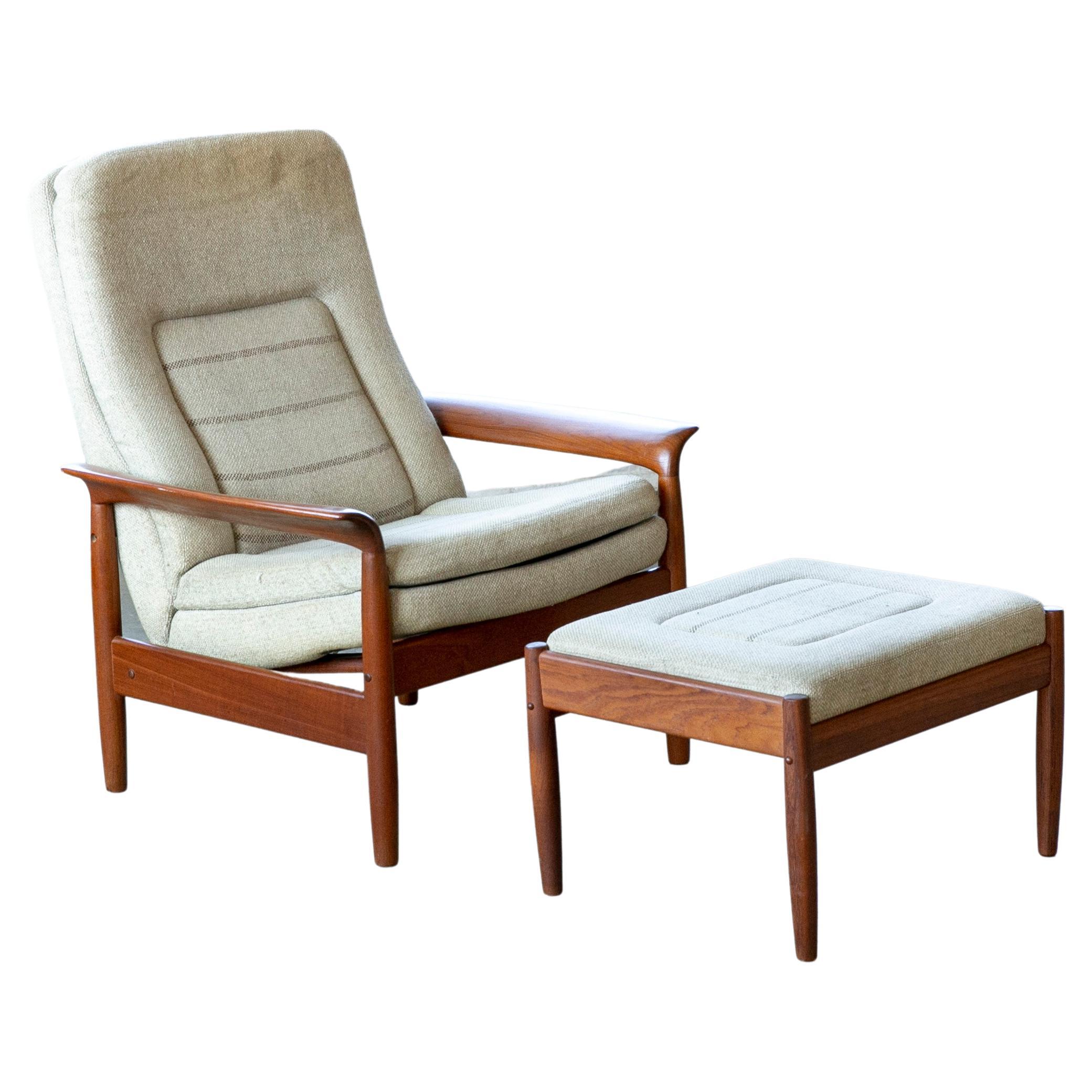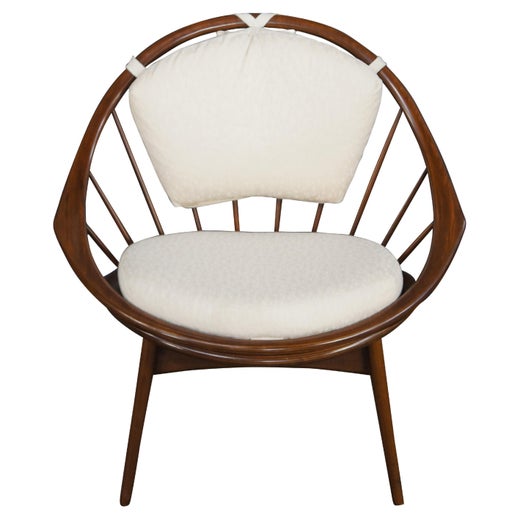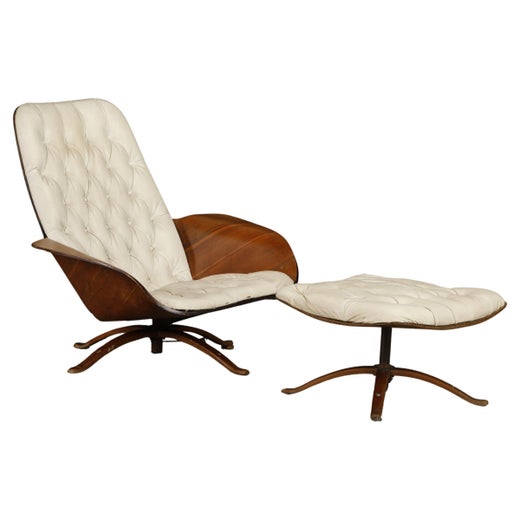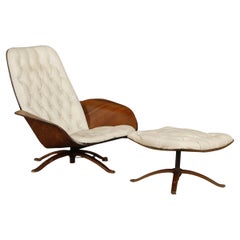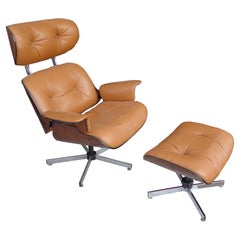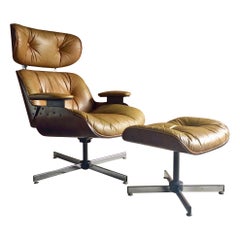
Midcentury Selig Plycraft Lounge Chair & Ottoman, circa 1960s
View Similar Items
Midcentury Selig Plycraft Lounge Chair & Ottoman, circa 1960s
About the Item
- Creator:
- Dimensions:Height: 39 in (99.06 cm)Width: 32 in (81.28 cm)Depth: 26 in (66.04 cm)
- Sold As:Set of 2
- Style:Mid-Century Modern (Of the Period)
- Materials and Techniques:
- Place of Origin:
- Period:
- Date of Manufacture:1960s
- Condition:Wear consistent with age and use.
- Seller Location:Longdon, GB
- Reference Number:1stDibs: LU1832312472512
Selig
As an importer and producer, the Selig furniture company helped popularize timeless and elegant postwar designs in the United States.
Selig created Danish-inspired chairs, sofas and other furnishings for the home that were cutting-edge, contemporary and airy. The brand was also among the first to introduce Scandinavian and European modern styles to Americans in the 1950s and 60s. The company imported and manufactured furniture known for its extraordinary design and style using high-quality, enduring and seductive materials.
Selig was founded in 1931 by Mandell Selig and Samuel Wexler. The pair started the business during the challenging economic times of the Great Depression prior to World War II. By the 1960s, under the leadership of Wexler's son, Robert, Selig peaked with manufacturing factories in five American cities.
Selig’s importing business had a meaningful impact on Italian furniture manufacturers. Wexler, the junior, had a hand in advancing and growing the manufacturing sector of the country’s Udine region. Due to this contribution, the Italian government saw fit to knight Robert Wexler with the title of “Cavaliere.”
After nearly four decades of influencing seating and lounging preferences in the United States with sophisticated mid-century modern and Scandinavian modern furniture — including its own chrome rocking chairs and leather club chairs — Selig sold to Simmons, the mattress company, in 1970, thus dissolving. Much of what they produced and imported is still available despite no longer being manufactured, and many collectors seek original Selig furniture.
On 1stDibs, find an array of vintage Selig furniture that includes lounge chairs, armchairs, tables and more.
Plycraft
While the history of Plycraft is marred by scandal and lawsuits, the American furniture manufacturer produced charming lounge chairs and other seating during the mid-century modern era that are sought after by collectors today.
Paul Goldman founded Plycraft in Lawrence, Massachusetts, in 1953 — he had secured military contracts for the manufacturing of bentwood products during World War II and was able to move into the commercial market thereafter. While Plycraft counted fiberglass boats among its early offerings, its primary focus switched to furniture when what we now call mid-century modernism hit its stride and more designers began to explore the possibilities of bentwood furniture thanks to the revolutionary work of Alvar Aalto and Michael Thonet. Goldman was Plycraft’s principal designer, but George Mulhauser and Norman Cherner were also enlisted to create furniture for the brand.
In 1952, a designer named John F. Pile, who was working in the studio of Herman Miller design director George Nelson, conceived what he called the Pretzel chair in walnut and birch. Pile’s seat, which was inspired by European modernist design, proved too costly to manufacture and it had structural problems. So the illustrious Michigan furniture maker subcontracted Plycraft to produce the Pretzel chair — an agreement that was short-lived owing to a dispute between Plycraft and Herman Miller.
Goldman subsequently tapped Norman Cherner — an innovative architect, designer and professor at Columbia University who was recommended by Nelson — to create an iteration of the Pretzel chair that would be stronger and cost-efficient to manufacture.
Cherner submitted a comfortable, curvaceous update to the Pretzel chair in molded plywood but was told by Plycraft that the project was being scrapped and his drawings shelved. Months later, Cherner was shocked to stumble upon his redesigned chair in a furniture showroom in New York under the Plycraft name. Cherner sued Plycraft and won — the Cherner chair later appeared in a Norman Rockwell painting on the cover of The Saturday Evening Post.
In the late 1950s, designer George Mulhauser created the Mr. Chair for Plycraft, an adjustable, tilting, swivel armchair with a matching ottoman. Mulhauser was also a designer in George Nelson’s studio and is credited with having conceived the iconic Coconut lounge chair for Herman Miller. With its tufted leather seat and shell crafted from a single sheet of plywood, the Mr. Chair lounge — part of a line of seating for which Mulhauser was commissioned — bears a resemblance to the now-legendary Eames lounge chair, which was designed by Ray and Charles Eames for Herman Miller. Mulhauser’s chair was very successful for Plycraft. A model was even spotted on an episode of Star Trek.
You May Also Like
Vintage 1960s American Mid-Century Modern Lounge Chairs
Plywood, Faux Leather
Vintage 1960s American Mid-Century Modern Lounge Chairs
Upholstery, Walnut
Mid-20th Century Brazilian Mid-Century Modern Lounge Chairs
Brass
Mid-20th Century North American Mid-Century Modern Lounge Chairs
Walnut
Vintage 1970s American Mid-Century Modern Lounge Chairs
Metal
Vintage 1960s American Mid-Century Modern Lounge Chairs
Naugahyde, Walnut
